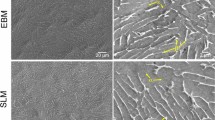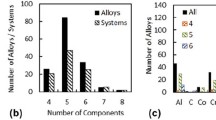Conclusions
-
1.
The length of the incubation period during recrystallization of alloy ÉI929 decreases sharply with increasing temperature and decreasing original grain size.
-
2.
Heat resistant nickel alloys with fine original grain sizes have less tendency to grain growth than alloys with coarse grains. The heats with fine original grains can be heated to higher temperatures and held longer before treatment under pressure.
-
3.
Heating to 1150°C does not ensure a uniform structure at the completion of recrystallization and can be recommended only for preliminary forging. Final forging should be done at higher temperatures (1180±5°C).
Similar content being viewed by others
Literature cited
S. S. Gorelik, Recrystallization of Metals and Alloys [in Russian], Metallurgiya, Moscow (1967).
I. I. Novikov and M. V. Zakharov, Heat Treatment of Metals and Alloys [in Russian], Gos. Nauch.-Tekhn. Izd. Lit. Chern. i Tsvet. Met. (1962).
Additional information
Translated from Metallovedenie i Termicheskaya Obrabotka Metallov, No. 6, pp. 56–57, June, 1969.
Rights and permissions
About this article
Cite this article
Godiev, A.G., Khairetdinov, É.F. Recrystallization of alloy ÉI929. Met Sci Heat Treat 11, 483–484 (1969). https://doi.org/10.1007/BF00656250
Issue Date:
DOI: https://doi.org/10.1007/BF00656250




